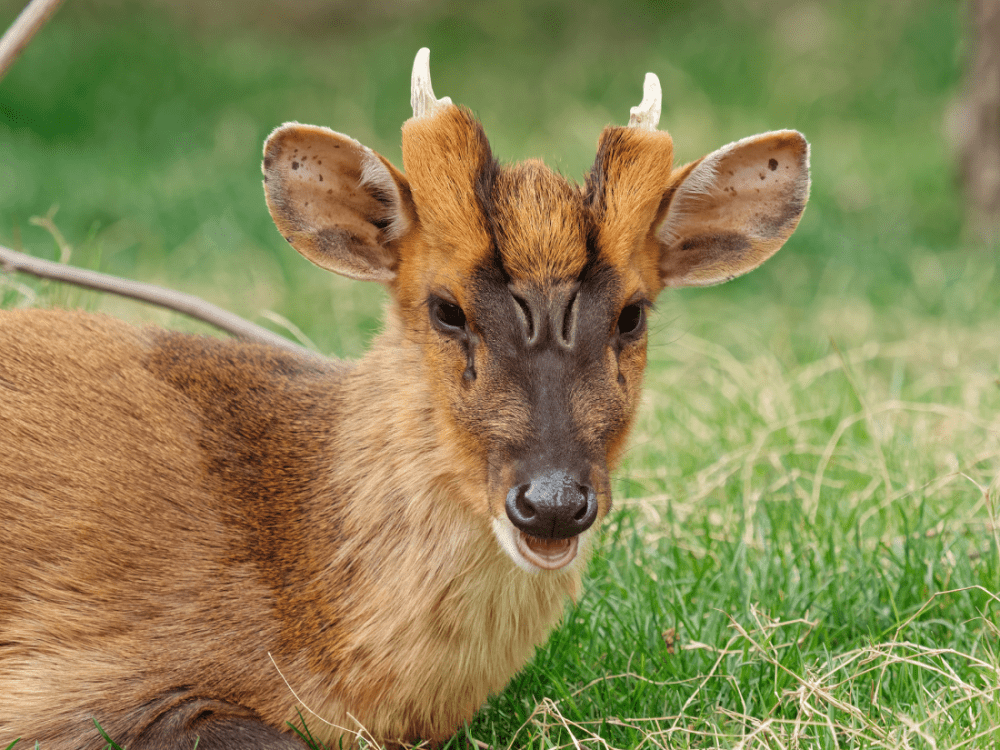A viral video on TikTok shows the bizarrely flappy faces of muntjac deer in all their glandular wonder. While it might look like the facial anatomy dreamt up by James Cameron’s Avatar, they’re actually an adaptation these animals have evolved to be able to scent mark their way through the wilderness.
The Reeves’s or Chinese muntjac, Muntiacus reevesi, is a type of deer native to southeastern China and Taiwan. However, its range now reaches far beyond that, as it was introduced by humans to Europe, western United States, and Japan, and if folklore’s to be believe it’s historically been predated on by killer squirrels.
As forest-dwelling animals, they are small and secretive deer, and while their barking call is a handy indicator for humans looking to photograph muntjac, they do most of their interspecies communication through scent. On the faces of muntjac deer are two sets of scent glands; the preoribital which sits just in front of the eyes, and the frontal glands that sit on the forehead. While they’re not the only hoofed mammals to have these glands, they use them for communication more often even than other deer species that live in larger groups.
At rest, the facial glands are closed and look like nothing more than a few folds of skin. However, should the muntjac decide to start scent marking it can flare the muscular glands, and it makes for a very peculiar party trick indeed.
The flaring facial glands of muntjac serve different purposes. The v-shaped frontal glands on the forehead are mostly used for scent marking the environment, and so muntjac will mostly keep them closed unless they’re rubbing their head on a tree trunk or branch. They will also flare their glands when excited, say if faced with a potential mate, or weird looking hairless primate holding a cup of food.
Males will use their flaring face glands to scent mark more often than females, and especially when in the company of other male muntjacs. They’ll use them to mark the ground, other deer, and flap them open while pooping and peeing.
The musculature of the glands is such that they can open both preorbital glands together, both frontal glands together, or even flare all four at the same time, but the glands are always opened synchronously on both sides. They can also seemingly accidentally flare during other activities, as the glands will often open if a muntjac is chewing something solid, or biting another deer.
The frontal glands form a v-shape on the muntjacs’ forehead when closed. Image credit: yanjf, iStock
The preorbital glands are perhaps the strangest of the muntjac’s facial flaps, as they can not only open but also evert, something that even juvenile muntjac can do. The v-shaped glands on the head on the other hand can only open to around a centimeter.
As ever, it pays not to try and handle wildlife, and in the case of the muntjac and its many-featured face, you might get a lot more than you bargained for if you try and give its forehead a tussle.
Source Link: Muntjac Deer Have Bizarre Flaring Scent Glands On Their Face
